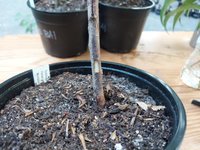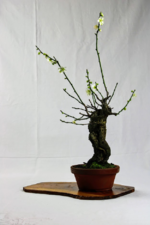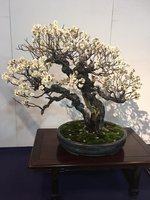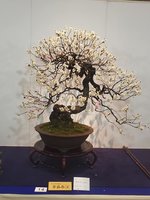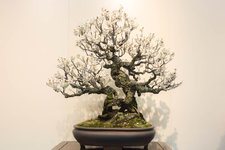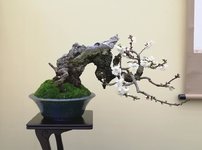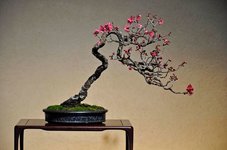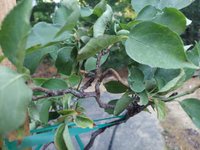White yabai (which is the equivalent of saying 'standard Acer palmatum'). Yabai is just the 'wild' variety.
I tried to do this for 2 years, and had considerable success but it turned out to be a misguided approach. During the last 2-3 years I also spent a lot of time (and money!) finding and sending translators to dedicated Ume growers and pre-bonsai nurseries specializing in Ume (I did this because i am interested in Ume both for bonsai and for fruit-products -- hence the logo). Exactly none of them are producing any of the cultivars via cutting.
Rather, they all produce cuttings of their yabai (i.e. 'standard Prunus mume), which are also extremely easy to do (I get +90% success rate from May to July here in Canada, and I use the first and second flush with success).
In Japan, low grafts of ornamental cultivars are common for the garden nursery trade. However, this is rarely done for bonsai except to meet particular needs in the market. The reason for this is that many of the cultivars tend to be very slow growing, and they can also have different growing habits. Therefore, it is much more common to grow out a trunk and primary branches using yabai (i.e. 'standard Prunus mume'), and then--and only if necessary--one can graft the cultivar onto the secondary or ideally the tertiary branches. (As Bjorn has explained (and i've tested it), you can go from a grafted scion to Kokufu-ready ramification in just 5-6 years).
As a fellow pre-bonsai grower, this is where the challenge comes: everybody wants the cultivars, so we are in effect forced to perform these 'low grafts' in order to able to propagate and sell these cultivars. In an ideal world, those people should be growing those cultivars into bushy scion-donors, while simultaneously training a 'standard Prunus mume' into the bonsai that will eventually receive those cultivar-scions. However, you and I both know that most people will just take the cultivar and start training it as a bonsai....
 .
.
